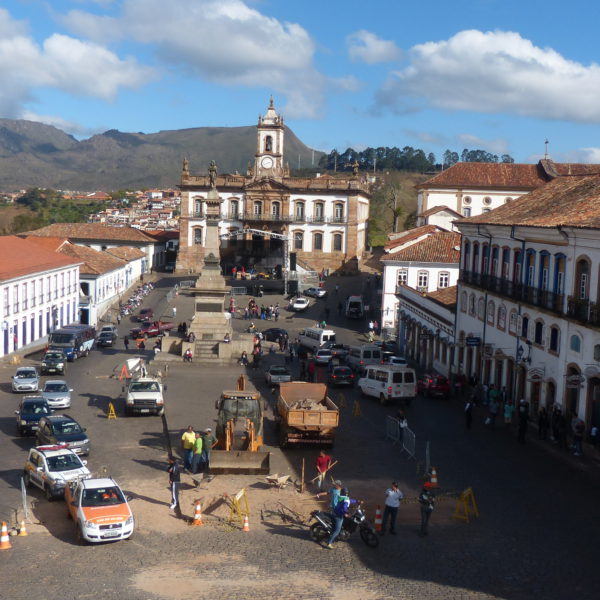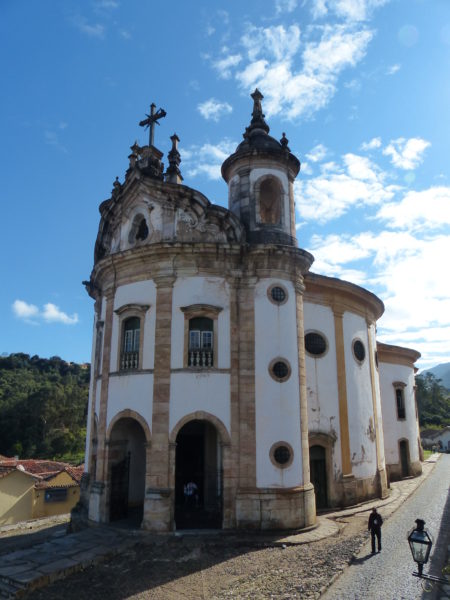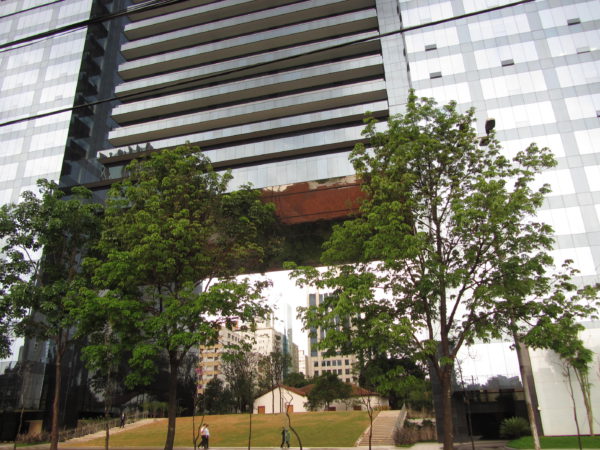Could cultural heritage topple Brazil’s political establishment?
Dr Andreza Aruska de Souza Santos

When Dilma Rousseff was impeached in August 2016, most Brazilians, and the rest of the world who follows politics in that country, did not expect that events could lead to a second president stepping out of office in the same year. Yet before 2016 has even come to an end, many newspapers are now speculating on the impact of Brazil’s current crisis on President’s Temer mandate, supposed to last until December 2018.
The crisis that began on 19 November 2016 has already led to two ministers giving up their positions and may yet interrupt a presidential mandate. The minister of culture, Marcelo Calero, quit after reportedly being pressed (with the apparent knowledge of the President) by the powerful Secretary of Government, Geddel Vieira Lima, to greenlight the construction of a skyscraper in the heart of the historic city of Salvador, in the state of Bahia. But the privileging of real estate interests over cultural heritage preservation is more common than one might think – and in most cases never makes the headlines.
The fact that Lima, who had bought an apartment on the top floor of the planned development, had attempted to use his political influence to sway a technical assessment – one that had already concluded that the construction would interfere with the ambiance of the historical neighbourhood around it – has shocked Brazilians. But there may be one good outcome from this latest scandal: it calls attention to cultural heritage policy-making and its wrongdoers.
Since the 1930s, Brazil has invested in its national memory through architecture. Under President Vargas, the National Historic and Artistic Patrimony Institute gained ground and colonial baroque architecture became central to the country’s preservation policies. Ever since, not only specific buildings or monuments but also entire urban districts have been preserved as part of the nation’s material memory. But what is important to mention is that, during the height of these preservation policies, many of the cities with the most architectural appeal for preservation were facing considerable population declines. To mention one example, the city of Ouro Preto, in the state of Minas Gerais, had already lost most of its residents to the newly created capital Belo Horizonte. To preserve an empty city, then, was also to bring hope that a renewed focus on cultural and historic national monuments would in time attract new residents too. And it did.
Historic city centres, scarcely populated at the time of preservation, soon became attractive again, not only for tourists, but also to new residential groups such as students and industrial businesses, who moved back to these revitalised areas. The subsequent tension between population growth and preservation policies has led to a conflict of interests: local politicians have the duty to preserve the city as a national or UNESCO World Heritage Site, community associations fight for better housing and transportation, technicians (mainly architects) are concerned with the maintenance of preserved buildings. Politicians may often pander to local interests and allow urban development to improve housing and transport. However, most of the changes that occur in heritage centres do not favour residents. Instead, construction companies often cater to an upper class thirst for the fine arts and exclusivity that unique colonial towns offer.

When historic cities change, the pattern of gentrification or “museumification” may not reverse: instead, the situation may escalate. If politicians allow for too much change, however, then the duty of preservation becomes more urgent. However, the technicians responsible for making this assessment – architects, planners, heritage specialists – are frequently unable to stop new constructions. Pressed by politicians, local populations and entrepreneurs, it is usually the head of the preservation office who steps out, either quitting or dismissed, not (as is happening now in Brazil) the politicians.
Across the country, those in charge of the preservation of Brazil’s heritage sites, man-made or natural, have stood (or not) against powerful interests, often at a high personal cost and the risk of losing their jobs. Officers have thus invited civil society to take part in preservation policies and Municipal Councils on the Preservation of the Patrimony have flourished across the country. Technicians then pass on to “society” the right (and the burden) to limit buildings, bridges and road construction, amongst others. But who are the participants in these councils? Do they face less risk than technicians when opposing central political and economic interests?
Indeed, participants often do not benefit from the process of engagement or in the outcomes of the decisions. When standing against projects, such as the construction of large residential buildings, residents may feel pressed in case they work for the prefecture or any of the construction companies (a strong likelihood in small and medium cities where employers are limited). Silence, non-responsiveness or debate, followed by pressure or threats from vested interests, are occurrences in these circumstances.

So, while providing a participatory platform is an important way to achieve a meaningful and living heritage, where local residents can make the most of their city, their culture and history, participation can also be exploited as a means to achieve the preordained interests of a powerful elite. In this case, participation may offer an air of legitimacy to decisions that are undemocratic and against most people’s interest.
In sum, municipal councils as well as technicians often face intimidation when signing, alone or as a group, negative reports to large entrepreneurships. The fact that Brazil today has a minister stepping out of office because he has acted against the cultural and historic patrimony for private benefit is thus the reversal of the cruel logic usually at play, whereby cultural heritage loses out to political, mining, real estate and other interests. However, much more important for the future of Brazil’s heritage than one toppled politician is to ensure his successors commit their full support to its preservation. Similarly, cultural heritage should be made locally meaningful – for example, through public discussions of new uses for construction, social housing facilities in touristic centres and transportation alternatives in cobblestoned streets – to engage communities in the protection of their historic environments. This is the challenge in cities such as Salvador, Olinda, Ouro Preto and elsewhere in Brazil, where the pressure of real estate will continue to grow with the population – whether or not the newspaper headlines choose to report it.